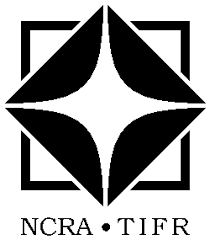Prof. Govind Swarup
 |
March 23, 1929 – September 7, 2020
Govind Swarup : The father of radio astronomy in India
With the passing of Prof. Govind Swarup on the evening of 7th September, 2020, TIFR has lost an iconic figure. A true pioneer, he jump started the country’s efforts in the nascent field of radio astronomy, and built facilities and institutions that have put India in the forefront on the global stage in radio astronomy. He leaves behind a legacy that we can be truly proud of. Govind Swarup was born in 1929 at Thakurdwara in U.P. He received an M.Sc. in Physics from the Allahabad University in 1950, (where K.S. Krishnan was an important influence), and a Ph.D from the Stanford University in 1961. He joined the Tata Institute of Fundamental Research (TIFR) in 1963, at the invitation Dr. Homi Jahangir Bhabha. The Radio Astronomy group he founded at TIFR was one of the first such groups anywhere in the world. His group quickly began building new facilities starting with a relatively modest radio telescope at Kalyan near Mumbai, but soon moving on to the the much more ambitious Ooty Radio Telescope (ORT). Prof. Swarup’s highly innovative design for the ORT (built between 1965 and 1970) allowed for the construction of a fully steerable, large telescope at a modest cost. The ORT is functional even today, having produced several cutting edge science results in a wide range of fields from the solar wind, pulsars, the diffuse interstellar medium, extra-galactic radio sources and cosmology.
During 1984 to 1996, Swarup conceived and directed the design and construction of the GMRT, which consists of 30 large fully steerable antennas, (each 45 m diameter), spread out over a 25 km region, about 80 km from Pune. Once again his innovative design was crucial to allow the construction of a world class telescope at a very modest cost. The GMRT remains one of the most sensitive radio observatories in the world in the frequency range of 130 – 1450 MHz , attracting users from all over the world and producing slew of cutting edge science results. It has the pride of place as one of the biggest basic science projects in the country. He became the project director of the GMRT in 1987, and when his group in TIFR became the National Centre for Radio Astrophysics of TIFR, he became its first Centre Director in 1993. He was a strong proponent of building up scientific capacity in the country, and played an important early role in conceptualising the setting up of the IISERs.
Swarup was a Fellow of the Royal Society of London and all the national science academies in India, and also of The World Academy of Sciences. He had received over 20 national and international awards, including the Bhatnagar Award, Padma Shri (1973), the Herschel Medal of the Royal Astronomical Society and the Grote Reber Medal (2007).
Despite his many achievements Swarup remained down to earth, equally happy to talk to junior technical staff as to some of the greatest scientists of his time. He was always, friendly, approachable, and continued to share his infections enthusiasm with young students till the very end. He is survived by his wife, Bina, son, Vipin, and daughter, Anju.
